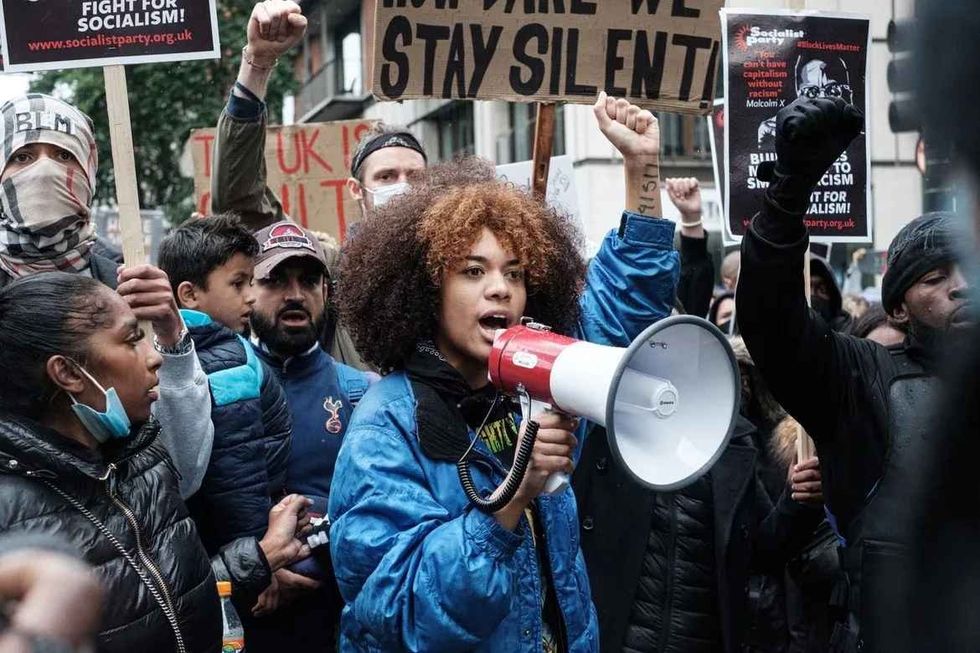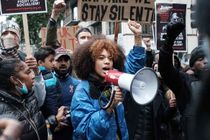15 Inspiring Facts About Rosa Parks That You Should Know

Rosa Parks is famous as the mother of the civil rights movement.
She energized the fight for racial justice. Parks refused to give up her bus seat to a white passenger in Montgomery, Alabama.
Rosa Parks' imprisonment on December 1, 1955, sparked the Montgomery Bus Boycott, which involved 17,000 black individuals. After 13 months, the city was obliged to desegregate its buses due to a Supreme Court judgment and falling profits.
Rosa Louise McCauley grew up on a modest farm with her mother, grandparents, and younger brother. She observed Ku Klux Klan night rides and listened in terror as lynchings took place near her home.
In 1932, she married barber Raymond Parks, and the pair became members of the Montgomery National Association for the Advancement of Colored People (NAACP). Parks had been the secretary of the local NAACP for 12 years when she initiated the bus boycott (1943-1956). In the early '40s, Parks established the Montgomery NAACP Youth Council.
Parks lost her sewing job and faced death threats as a result of the Montgomery Bus Boycott. In 1957, she relocated along with her family to Detroit, Michigan.
She continued to be a major participant in the NAACP, and campaigned with Congressman John Conyers (1965-1988), assisting the underprivileged in finding housing. The Rosa and Raymond Parks Institute of Self-Development were founded in 1987 to provide employment training for African-American youngsters.
Parks was awarded the Congressional Gold Medal of Decoration in 1999, the highest civilian honor in the United States. The Rosa Parks Freedom Award is given on an annual basis.
Who was Rosa Parks?
Rosa Parks' resistance became an instant symbol, but it was also a logical continuation of a longtime dedication to action. She has routinely disregarded bus segregation restrictions over the years. She was once thrown off a bus for her disobedience.
A civil rights activist from America. Rosa Parks began a stir by refusing to give a seat to a white passenger. This sparked the Montgomery bus boycott. The boycott took place in Alabama.
The incident took place in 1955 and continued till 1956. The civil rights movement was initiated in the United States of America. So she was known as the mother of this movement.
Rosa Parks' birthday is on February 4, 1913. Rosa was schooled at home for most of her youth by her mother. Her mother worked as a teacher at a neighboring school. Rosa assisted with agricultural work and learned to cook and sew. Farm life, on the other hand, was far from ideal.
Rosa and her family were subjected to prejudice in less violent forms as well. When she started school in Pine Level, Rosa had to attend a segregated school, where one teacher was in charge of roughly 50 or 60 students.
Despite the fact that white students in the region were bused to school, black children had to walk at pine level.
Jim Crow laws separated public transit, water fountains, restaurants, and schools.
Rosa attended the Montgomery Industrial Academic for Girls when she was 11 years old, where she was taught conventional school topics as well as household skills. She was forced to quit school at the age of 16 due to family sickness, and she began cleaning white people's houses.
Rosa Parks married Raymond Parks, in 1932, when she was 19 years old. Raymond Parks urged her to return to high school and acquire a diploma. Rosa Parks' education was incomplete till then. She then worked as a seamstress. Rosa Parks joined the Montgomery branch of the NAACP in 1943 and worked as a secretary until 1956.
On December 1, 1955, Parks boarded a Montgomery municipal bus. The bus driver urged Parks and other black passengers to relinquish their seats. He asked them to stand after observing white passengers standing in the aisle. Three of the passengers stood up, but Parks refused.
Parks' trial was stated as found guilty, she was convicted and jailed. A judge awarded Parks a fine of $10 for the infraction as well as $4 in court costs. She did not pay it.
Instead, she accepted Montgomery NAACP chapter president E.D. Nixon's offer to assist her in appealing the sentence.
They challenged Alabama's segregation laws and local ordinances against African Americans. Parks and Nixon were both aware that they were exposing themselves to abuse and death threats. They were also aware that the case had the potential to elicit national indignation and bus protests on public buses.
On December 5, a boycott of the public bus business was launched by African American people. They did this under the auspices of the Montgomery Improvement Association, led by Martin Luther King, Jr. African Americans made up around 70% of the passengers, and the lack of their bus tickets significantly reduced their income.
The Montgomery chapter boycott lasted 381 days. Individuals outside of Montgomery supported the cause by protesting segregated restaurants, pools, and other public facilities across the country.
The United States Supreme Court affirmed a lower court's judgment. He found Montgomery's separate bus seating unlawful. On November 13, 1956, a court ruling to integrate the buses was issued, and on December 20, the boycott ended.
Simplified versions of Parks' account said that she refused as she was tired physically rather than to protest unjust treatment. However, at the time of her imprisonment, she was a seasoned activist. She had collaborated with the NAACP on previous civil rights issues.
It was not the first time a black woman had refused to give up her bus seat. It was a 15-year-old girl. Nine months earlier, Claudette Colvin had been jailed for the same act.
Hundreds of other black women, even at a young age, had been revolting against segregated public transportation. Her case was significant in forcing the city of Montgomery to permanently desegregate city buses. She was a member of the NAACP and created pressure on the local government and bus drivers to let go of segregation.
Parks relocated to Detroit with her husband and mother in 1957, where she served on the staff of Michigan Congressman John Conyers, Jr. from 1965 until 1988. She stayed involved in the NAACP, and in her honor, the Southern Christian Leadership Conference established the Rosa Parks Freedom Award.
In 1987, she established the Rosa and Raymond Parks Institute for Self-Development to equip young people with job training and teach them about the history of the civil rights struggle.
She was the recipient of various honors, including the Presidential Medal of Freedom (1996) and the Congressional Gold Medal (1999). 'Rosa Parks: My Story' (1992), her autobiography, was co-written with Jim Haskins.
Despite the fact that desegregating Montgomery's municipal buses was a tremendous accomplishment, Parks was not pleased with that win. She recognized that the United States was still failing to respect and defend black Americans' lives.
Martin Luther King, Jr., who had brought the Montgomery bus boycott to national attention, was slain just under a decade after Parks' lawsuit was resolved. Though Rosa Parks was still not happy, as she wanted all discrimination to go away. Not just the segregated bus law.
When Parks expired in 2005, her remains were laid in state in the rotunda of the United States Capitol, a privilege designated for private people who have shown outstanding service to their nation. Mourners visited her casket for two days, thanking her for her commitment to civil rights.
Parks would be the first woman and just the second black person to be awarded the honor.
What was Rosa Parks' job?
Rosa Parks began work as a seamstress. Rosa Parks then became an administrative aide in Congressman John Conyers Jr.'s Detroit office in 1965 and worked there till her retirement in 1988.
Rosa was married to Raymond Parks. He was a barber by profession in Montgomery. They married in 1932. They were both members of the NAACP, which was raising funds to defend the Scottsboro Boys.
This was a group of black men wrongfully convicted of raping two white women. Rosa worked in a variety of professions, from domestic helpers to hospital assistants. At the prompting of her husband, she completed her high school studies in 1933, at a period when less than 7% of blacks held a high school certificate.
Parks began her involvement in the civil rights struggle in December 1943, when she joined the Montgomery branch of the NAACP and was chosen secretary at a time when this was considered a woman's role. She worked as a secretary until 1957.
When she was the secretary, in the year 1944, she worked on investigations. She investigated the famous case of the gang rape of Recy Taylor. She also arranged for a committee for equal justice. She continued to become an anti-rape activist. Parks organized many protests in support of black women in the Montgomery chapter of her life.
Park was not a member of the communist party. She went there along with her husband. The communist party had given importance to the Scottsboro case.
In the '40s, Rosa and her husband became members of the League of Women Voters. She briefly worked at Maxwell Air Force Base.
They did not entertain racial segregation as a federal territory. She used the built-in trolley. 'You may basically say Maxwell opened my eyes up,' Parks told her biographer.
Clifford and Virginia Durr, a white couple, hired Parks as a cleaner and seamstress. Her friends were the Durrs, who were liberal in politics. They urged — and later helped fund — Parks to attend the Highlander Folk School in Monteagle, Tennessee, in the summer of 1955, an education center for advocacy of workers' rights and racial equality.
Septima Clark, an experienced organizer, mentored Parks there. Despite Jim Crow laws and harassment by registrars, she registered to vote on her third attempt in 1945.
Emmett Till, a black teenager, was brutally killed in August 1955 after allegedly flirting with a young white lady while staying with friends in Mississippi. Rosa Parks attended a public gathering at Dexter Avenue Baptist Church in Montgomery on November 27, 1955, four days before the Montgomery chapter.

Did Rosa Parks have kids?
On October 24, 2005, Rosa Parks succumbed to natural death. She lived her last breath at her apartment in east Detroit. Parks died at 92. She never had children. Her whole life was dedicated to serving black people. She wanted equality for them in all fields of life, not just transport.
What is Rosa Parks famous for?
Rosa Parks has been called the mother of the civil rights movement. She was not the first one to do so. But she was certainly the first one to do it aggressively and see that there were changes to give racial equality. She dedicated her whole life to being an activist and never even had children.
Rosa was also responsible for the Montgomery bus boycott. It had the participation of 17,000 black people in her support. They all wanted to be treated equally.
Rosa Parks came to the limelight after the incident in Montgomery. Parks refused to give her bus seat to a white passenger just because of her skin color on the city bus. She had been convicted and fined for this crime.
But she made it her job to get the city rid of this discriminatory law. Her protests were supported by many people. As many as 17,000 people came out in her support and boycotted the city buses.
Rosa Parks is now a symbol of the Civil Rights Movement after her imprisonment, but she suffered as a result. She lost her job at the retail shop as a result of economic restrictions imposed on campaigners.
Her husband's work as a barber at Maxwell Air Force Base was terminated when his supervisor prevented him from discussing his wife or the court matter. Parks traversed the country and spoke about the concerns.
Rosa Parks and Raymond Parks moved from Montgomery to Hampton, Virginia, in 1957, mostly due to her inability to find a job. Rosa was frequently threatened with murder. She obtained work as a waitress in an inn at Hampton Institute, a historically black college, in Hampton.
Rosa Parks wrote 'Rosa Parks: My Story' in 1992, an autobiography geared at younger readers that recounted her experiences leading up to her choice to remain seated on the bus. A few years later, she released 'Quiet Strength' (1995), her book on her faith.
Parks made a guest appearance on the television series 'Touched by an Angel' in 1999. It was her final film performance; Parks had begun to suffer from health difficulties as she grew older.
We Want Your Photos!
More for You
Bachelor of Science

Sakshi ThakurBachelor of Science
Sakshi is a skilled content writer with extensive experience in the education industry. With a keen eye for detail and a passion for helping others, she has developed a reputation for excellence in academic content writing. She has worked with esteemed professionals such as Mr. Kapil Raj, a professor of History of Science at the École des Hautes Études en Sciences Sociales in Paris, further enhancing her knowledge and expertise. Sakshi is well-versed in the latest developments in e-learning and has a deep understanding of how to engage students and make learning fun and accessible. In her spare time, she indulges in her creative passions, including painting, embroidery, and listening to soft music. She also enjoys exploring new cultures and traveling, which helps her broaden her perspectives and inspire her writing. She holds a Bachelor's degree in Science from Panjab University.
Bachelor of Science specializing in Microbiology, Masters of Science specializing in Biotechnology

Pratiti NathBachelor of Science specializing in Microbiology, Masters of Science specializing in Biotechnology
A Master's in Biotechnology from Presidency University and a Bachelor's in Microbiology from Calcutta University. Pratiti holds expertise in writing science and healthcare articles, and their inputs and feedback help writers create insightful content. They have interests in heritage, history, and climate change issues and have written articles for various websites across multiple subjects. Their experience also includes working with eco-friendly startups and climate-related NGOs.
Disclaimer
1) Kidadl is independent and to make our service free to you the reader we are supported by advertising. We hope you love our recommendations for products and services! What we suggest is selected independently by the Kidadl team. If you purchase using the Buy Now button we may earn a small commission. This does not influence our choices. Prices are correct and items are available at the time the article was published but we cannot guarantee that on the time of reading. Please note that Kidadl is a participant in the Amazon Services LLC Associates Program, an affiliate advertising program designed to provide a means for sites to earn advertising fees by advertising and linking to Amazon. We also link to other websites, but are not responsible for their content.
2) At Kidadl, we strive to recommend the very best activities and events. We will always aim to give you accurate information at the date of publication - however, information does change, so it’s important you do your own research, double-check and make the decision that is right for your family. We recognise that not all activities and ideas are appropriate for all children and families or in all circumstances. Our recommended activities are based on age but these are a guide. We recommend that these ideas are used as inspiration, that ideas are undertaken with appropriate adult supervision, and that each adult uses their own discretion and knowledge of their children to consider the safety and suitability. Kidadl cannot accept liability for the execution of these ideas, and parental supervision is advised at all times, as safety is paramount. Anyone using the information provided by Kidadl does so at their own risk and we can not accept liability if things go wrong.
3) Because we are an educational resource, we have quotes and facts about a range of historical and modern figures. We do not endorse the actions of or rhetoric of all the people included in these collections, but we think they are important for growing minds to learn about under the guidance of parents or guardians.







